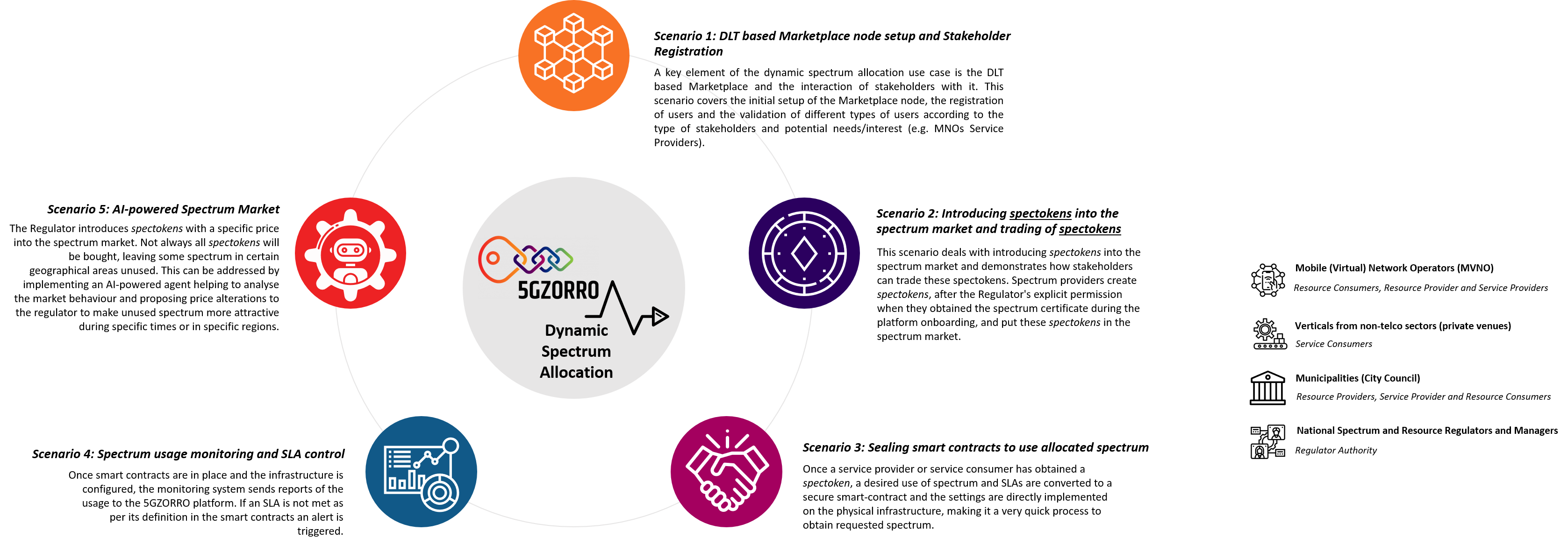Authors: Ana María Morales and Fernando Diaz, ATOS
INTO THE SERIES
Current 5G Management and Orchestration (MANO) platforms cannot realize the full set of benefits 5G could provide. Existing architectures and solutions do not meet the needs of multi-domain scenarios and heterogeneous ecosystems for support compute, storage, network and spectrum resources from multiple operators while introducing intelligent automation mechanisms to deal with the complexity of network operations and the increasing number of resources to be managed in network virtualisation environments.
In addition, the near future of 5G networks envisions diverse providers across different geographical areas that could collaborate by sharing, leasing, and using heterogeneous sets of resources to provide true on-demand integration of ubiquitous resources in terms of computing, network, and storage transparently through multiple technological and administrative domains.
To tackle these challenges and unleash the benefits of 5G networks, 5GZORRO is developing a zero-touch orchestration platform integrating Artificial Intelligence (AI) to govern the complexity of automation through the identification of usage patterns and cognition into operational data lakes, united with distributed ledger technologies to implement a scalable and secure solution for the interworking and accountability of different actors involved.
But do you know how will 5GZORRO ensures that the architecture, services, and tools developed within the project effectively meet the expectations and needs of potential end-users?
Do not miss this Blog Post series, intended for you to learn the details and motivation of the three use cases that have been defined to validate 5GZORRO results:
- Smart Contracts for Ubiquitous Computing/Connectivity [already published]
It covers mechanisms for the implementation of DLT-anchored Smart Contracts and Oracles with the objective of enabling decentralized trust for multi-party interactions and SLA management.
- Dynamic spectrum allocation
It envisions Blockchain-enabled spectrum markets, where shared spectrum right holders can trade and lease spectrum rights for a given area and time, enhancing spectrum efficiency while maintaining the QoS at the required level.
- Pervasive virtual Content Distribution Network Services (vCDN)
It covers the capacity for delivering scalable, pervasive vCDN services including HQ video streaming (live and/or VoD), in situations with significant variations in the context of flash crowd scenarios e.g., video sharing in stadiums or demonstrations, or sharing breaking news live feed, based on the concepts described in previous use cases.
5GZORRO Use Case 2: Dynamic spectrum allocation
Through Blockchain-enabled spectrum markets, this Use Case aims to enhance spectrum efficiency while maintaining the QoS by allowing shared spectrum right holders to trade and lease spectrum rights for specific areas or periods of time.
In the “everything-connected” world where we are currently living, spectrum is a scarce asset from which cellular networks depend on their operation. The whole spectrum used for radio communication can be categorised into:
- Licensed spectrum, depending on the regulatory domains’ specific frequencies to operators and/or verticals are assigned usually for commercial cellular communications
- Unlicensed spectrum, which is accessible by anyone and used by essentially localised technologies such as Wi-Fi, Bluetooth or IEEE 802.15.4
Due to its scarcity, the efficient use of the spectrum and complying with the applicable strict regulations is of the utmost importance. In this case, achieving a high degree of efficiency can be done by maximising the usage over time and space, reaching a new concept of dynamic spectrum sharing where available (i.e. unused) licensed spectrum is assigned over a limited duration of time and for a specific geographic location due to specific circumstances.
Imagine how useful this could be for sectors such as Industry 4.0 where a smart factory has come to an agreement with radio hardware providers to deploy some radio infrastructure within the premises. These radio installations should provide connectivity services for any user equipment and connected machines relying on various technologies such as 5GNR, LTE or Wi-Fi. Although the factory can use the unlicensed spectrum for basic means of user connectivity, possible issues may affect the operation, and the use of a licensed spectrum is commonly assigned to MNOs on a national level. Hence, an agreement is needed between the MNOs and the smart factory for the use of a range of spectrum in the specific geographical area where the factory is located, and during certain periods of time considering only reduced capacities that might be needed during the nighttime or weekends.
5GZORRO addresses this and other potential scenarios where the need for dynamic spectrum can be useful for maximising the efficiency of the spectrum and benefit multiple stakeholders. This is mainly done through the use of Smart Contracts and corresponding SLAs between the Regulator or other owners of a range of the spectrum, for the shared use of it on a specific location and over a specific timeframe. Moreover, 5GZORRO aims to support these needs through a spectrum allocation solution capable to provide shared spectrum access service, with a higher degree of flexibility by integrating various state-of-the-art technologies and solutions.
Through the creation of the 5GZORRO spectrum market, stakeholders would be able to buy and sell spectrum for a specific geographical area for a limited time duration. By leveraging Distributed-Ledger and Blockchain technologies, the 5GZORRO market platform can provide enhanced interoperability, automation, privacy and trust. In addition, the use of these technologies also foresees advanced capabilities to track the assignment of the spectrum, the capability of controlling and configuring different Radio Access Technologies (RAT) and monitoring the usage of spectrum, which are key features required to implement this use case.
Furthermore, 5GZORRO spectrum market will offer a high degree of dynamism by introducing the novel concept of spectokens, non-fungible tokens representing the rights to use spectrum in a location over a duration of time and will be available for sale and trade by authorized 5GZORRO users. Therefore, each Smart Contract will contain the business terms of the resource being represented by the spectoken for enabling optimised use of the spectrum, near real-time and on-demand contracting with an optimal price for the resources being traded.
The implementation of a 5GZORRO distributed ledger provides for an archiving system to reflect the status, use and transactions of spectokens shared amongst 5GZORRO users. The computer code that is the foundation of each Smart Contract, representing the business logic of its offline counterpart document, is also written onto and stored in the shared ledger, which is maintained by the employment of a consensus mechanism with a hierarchy of users variably authorized within the 5GZORRO environment to undertake certain actions according to their role.
This hierarchy-based, business-level consensus will permit the creation of spectokens, by Resource Providers and will provide governance, transparency, and oversight for 5GZORRO resource consumers as to the right to create non-fungible spectokens. A Smart Contract, recorded on the 5GZORRO ledger, will govern the issuance of such spectokens by Resource Providers.
HOW WILL IT WORK?
The Regulator stakeholder, the sole responsible entity of the spectrum management, will have the ability to generate spectrum certificates for spectrum resource providers such as MNOs that acquired the right to operate on the licensed spectrum. These spectrum certificates will act as verifiable claims in the 5GZORRO platform. On the other hand, a spectrum resource provider will use its spectrum certificate in order to generate spectokens for a particular area.
Once spectokens are available in the market, a stakeholder may buy them and agree on a smart contract that defines how the spectokens are used. The 5GZORRO platform will act as a hub between the spectrum market with its stakeholders and the agents that enforce the contracts on the hardware, hosting the spectrum database and the Access System (e.g. RAN controllers).
Figure 1: 5GZORRO Scenarios of Dynamic Spectrum Allocation
This use case considers a total of 5 scenarios that demonstrate the main platform features for the implementation of the dynamic spectrum allocation and how stakeholders interact with the system to participate in the spectrum market trading.
Follow our updates on www.5gzorro.eu.




